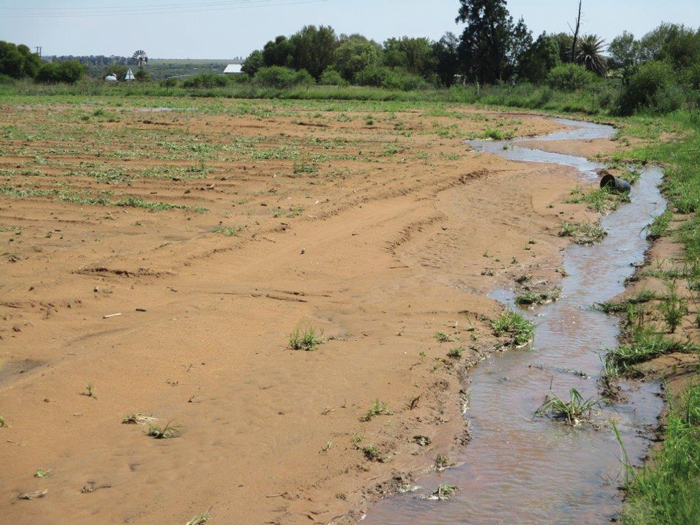March 2022
Although producers are always grateful for rain, the season so far has created many challenges where producers could not access fields on time due to high rainfall figures, and where producers managed to plant, water damage has occured.
The current South African summer grain production season is being subjected to extremes. Not long ago, grain producers in the country experienced long cycles of drought which had a severe negative impact on their financial position.
At the beginning of the planting season there was great excitement for the season and the prospect of favourable production conditions. This excitement was dampened by excessive rainfall in certain areas of the country, especially where soil profiles were already full. In some cases it has affected individual producers' total expected production. Several reports have confirmed that the rainfall figure for December was the highest in 100 years. Furthermore, compared to the past, much more hail damage has been reported in certain areas.

Regional development manager Du Toit van der Westhuizen shared these images of the damage caused to David Molo’s crop, who is from Deelpan in North West.
QUESTIONNAIRE TO DETERMINE DAMAGE
Although it is difficult to quantify the extent of the damage so early in the season, Grain SA, through a questionnaire, conducted an investigation to determine the exposure of summer grain plantings to water damage. The questionnaire was completed by 434 producers. The report and results are available at the following link https://bit.ly/3Gv84lp.
The questionnaire clearly indicates the negative impact of water damage in certain production regions. In extreme cases, individual producers report a total loss of plantings.
The questionnaire is only an indication of the possible exposure to waterlogged conditions. The impact of the water damage on production will only really be determined and evaluated with the first summer grain production estimate on 27 February.

On the left: in Bultfontein a farmer even had fish swimming in his lands. On the right: The result of 100 mm rain within an hour in North West.
Grain SA is concerned about the effects of the extreme weather patterns, especially in certain areas such as those experienced in recent seasons. This, even more so, after the previous drought cycle, where some producers already had to leave the industry and others are still recovering financially. Thankfully international grain prices are at favourable levels.
Grain SA advises producers to contact their financiers well in advance if large-scale damage is experienced or expected. The early planning provides financiers with the opportunity to plan for loan restructuring timeously. In addition to the production challenges, there is also damage to important infrastructure and Grain SA is working with organised agriculture at provincial level to put the necessary actions in place for possible support and recovery.
Visit Grain SA’s website, www.grainsa.co.za for the complete press release.

A hail storm in the Welkom area completely destroyed David Phike’s watermelon crop.
Publication: March 2022
Section: Pula/Imvula
Author: Grain SA press release, 13 January